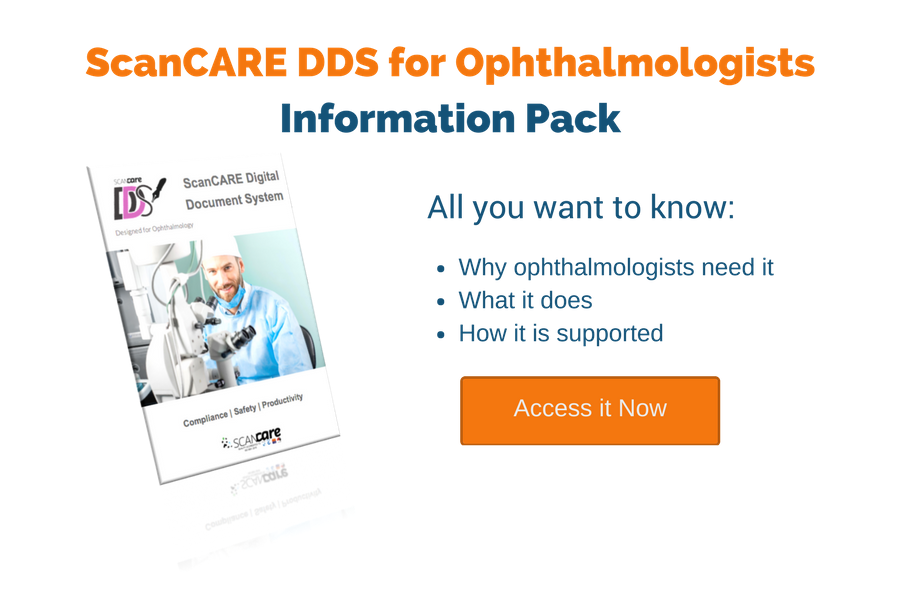Choosing a digital medical records management system: 4 considerations

Paperless or digital medical records management systems, are the buzz term these days. It seems like just about every medical practice manager at private and public hospitals is seriously considering adopting digital patient charts and going paperless. There are multitudes of systems out there that, from a distance, all look similar. So which one is right for your medical organisation and what are the most important things you should consider when making the change?
Read on if you want to discover 4 aspects that you need to consider when making the change from a paper system to a digital medical records system.
Ease of use and process management
The adoption of new technology and systems can meet with resistance so user friendliness ought to be of primary consideration. Equally important however is how well a digital system reflects your current business processes and workflows.
Unfortunately many digital document solutions are developed by software specialists who have had limited exposure to the ‘Real World’ of patient care. In evaluating a paperless system, pay attention to how closely the user interface of the digital solution resembles your current paper based medical records. Transitioning to digital systems is much easier when the processes that your teams are familair with remain unchanged. So, it makes sense to consider a digital medical records system that can be tailored to your current workflows and facilitates the use of your current forms.
In a nutshell, a digital medical record solution needs to adopt to your current workflows and business processes. Not the other way around.
Productivity or Simply a Transfer of Administrative Burden?
Productivity gains are top of the desired outcomes in pretty much all technology investment considerations. Most Digital Medical Records will indeed deliver productivity gains around administration. However putting digital record management in the hands of doctors and carers can often mean that the administrative tasks are simply transferred from medical administrators to doctors and carers. So what looks like a productivity gain is in reality a transfer of administrative burden which has significant implications for the number of patients a doctor or carer can see in a day.
A consult that used to take 15 minutes can easily increase to 20 minutes if the carer is now also charged with administration duties.
Do the sums; 4 patient consultations per hour is now 3 patient consultations per hour. This means a decrease from 32 to just 24 consultations per day. Extrapolate those figures out to a week and the doctor is seeing 40 patients less per week! In this scenario, the doctor effectively spends 2 hours a day on administration when he or she could be treating patients!
What is the point of using digital records to gain productivity in administration if that goes at the expense of productivity in the main income producing area of the business?
Patient Experience
A doctor facing a computer screen appears disengaged from the patient. It is difficult to talk to a patient whilst simultaneously looking at the screen and tapping away on the keyboard. The patient experience suffers enormously as a result. Doctors however can write and talk to patients at the same time and be completely engaged with the patient. They're trained to so. It therefore makes sense, that a digital patient record solution adopts to the doctor's preferred work method and allows the doctor to write just as he or she is used to doing.
NSQHS and other Australian Health Records Management Standards
Any health professional and medical practice manager understands how critical compliance and accreditation is to a health services organisation. Systems that help you comply with standards have the potential to reduce the cost and burden of compliance whilst securing the organisation's accreditation. There are 3 medical standards relevant in Australia that are particularly relevant to digital medical records management.
- NSQHS - Accreditation to NSQHS is a non-negotiable, Any digital system must deliver compliance with this set of standards.
- AS2828.1 provides a framework as to how patient charts should be formatted. It is highly relevant and states that, patient records must be printed in an AS282.1 compliant format. This means that your digital document system must have this print format built in.
- ISO 18308 relates to how digital medical records systems should be designed. Besides covering the design framework, this standard covers things like security, privacy and document retention & archiving.
Summary: Medical Digital Document System Selection
Whilst most digital medical records management solutions offer productivity gains it is wise to consider how these gains are realised. Some gains are simply a transfer of administrative burden on doctors and carers. The implications of this often translate into fewer patient facing and consulting hours whilst also negatively impacting the patient experience.
Going paperless is made infinitely easier when the digital document system reflects and adopts the processes your team is already familiar with.
Finally, always be sure that your choice of patient records management solutions meets all the required Australian standards - NSQHS, AS2828.1 and ISO18303



